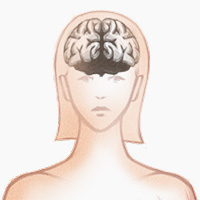Aug, 2017
This 4-minute video shows how Alzheimer’s disease changes the brain and looks at promising ideas to treat and prevent the disease.
Alzheimer’s disease is the most basic form of dementia, and scientists are trying to understand how the affects the nervous system. This video illustrates how neurons communicate in a healthy brain compared to that of a person with Alzheimer’s disease. In a healthy brain, cells such as astrocytes and microglia help keep neurons healthy by clearing away debris that builds up over time. In a person with Alzheimer’s disease, toxic changes in the brain destroy the ability of these cells to maintain a healthy environment for the neurons in the brain, ultimately causing a loss of neurons.
Researchers believe that the Alzheimer’s disease process involves two proteins: beta amyloid protein and tau protein. Within the brain of a person with Alzheimer’s disease, these proteins become compromised. Over time, abnormal tau accumulates and eventually forms tangles inside the neurons, and the beta amyloid clumps into plaques, which build up between the neurons. As the level of amyloid increases, tau rapidly spreads throughout the brain.
Other changes that affect the brain may play a role in the disease, such as the inability of the vascular system to deliver enough blood and nutrients to the brain. These factors cause the brain to shrink in size, starting with the hippocampus. A person with Alzheimer's gradually loses the ability to think, remember, make decisions, and function independently.
Researchers are working on the key to understanding Alzheimer’s disease so that Alzheimer’s disease research can lead to the development of more effective therapies with the hope that we can delay or even prevent the devastation of dementia.










